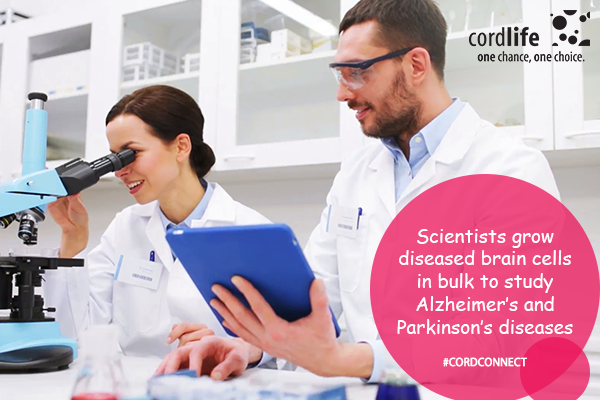Table of Contents
Researchers who work on neurodegenerative disorders like Parkinson’s or Alzheimer’s disease need to access diseased human brain cells very frequently. In that process, they create diseased human brain cells from human pluripotent stem cells in the lab. However, the main problem in the procedure is, they cannot regenerate enough diseased neurons to study the diseases more closely. This is the reason that the diseases still cannot be detected at an early stage or we don’t have any proper drug to delay the occurrence of the diseases.
To overcome the issue, scientists would need a resource to regenerate human brain cells in bulk. To address it, a team of researchers from Lund University built a new technique to effectively regenerate brain cells in bulk from patients, suffering from neurodegenerative diseases like Huntington’s, Parkinson’s, and Alzheimer’s diseases. Dr. Malin Parmar is the senior author of the study, which is published in EMBO Molecular Medicine.
Earlier studies showed that reprogramming the cells back to the pluripotent stem cell state wipes out the aging effects in the cells. So, the team employed an alternative method to create the neurons. The approach involved turning the human skin cells into brain cells. They did not reprogram the skin cells to the pluripotent stem cells in the first place. The method is called “direct conversion”, which is considered to be an efficient shortcut to regenerate mature brain cells in a dish. Once the direct conversion was applied, the aging signs remained intact, which resulted in an aging brain.
Parmar explained, “Primarily, we inhibited a protein, REST, involved in establishing identity in cells that are not nerve cells. After limiting this protein’s impact in the cells during the conversion process, we’ve seen completely different results.” This technique also helped them to study aging brain cells at different levels of the diseases, as aging is one of the main risk factors in these diseases.
The method was developed entirely to regenerate human brain cells in large quantities, so the scientists have access to a sufficient number of diseases brain cells to conduct their researches. However, early detection also plays a significant role in treating diseases. For this reason, as well, the scientists wanted a technique that offers a way to test new drugs to treat or delay the symptoms of these neurodegenerative diseases.
The team also created two proteins, Ascl1 and Brn2. These proteins are important to regenerate brain cells. Parmar said, “We’ve been playing around with changing the dosage of the other components in the previous method, which also proved effective. Overall, the efficiency is remarkable. We can now generate almost unlimited amounts of neurons from one skin biopsy.”
Dr. Johan Jakobsson, the co-author of the study said, “This takes us one step closer to reality, as we can now look inside the human neurons and see what goes on inside the cell in these diseases. If all goes well, this could fundamentally change the field of research, as it helps us better understand the real mechanisms of the disease. We believe that many laboratories around the world would like to start testing on stem cells to get closer to the diseases.”
